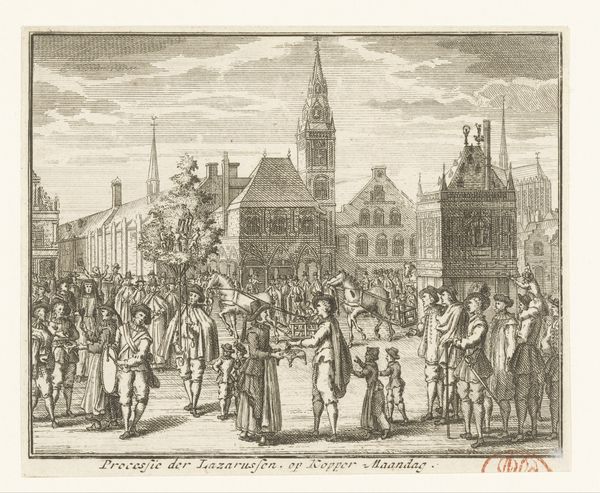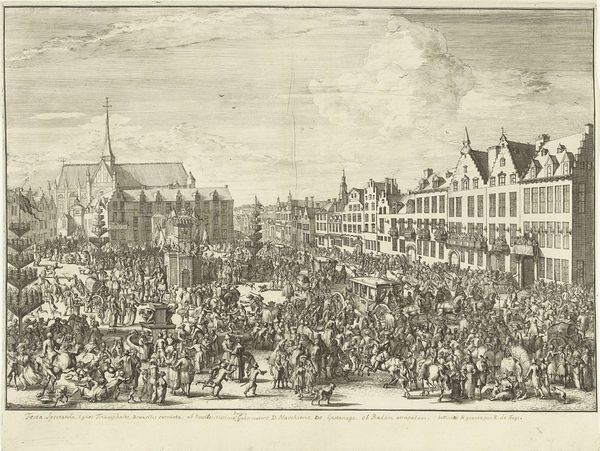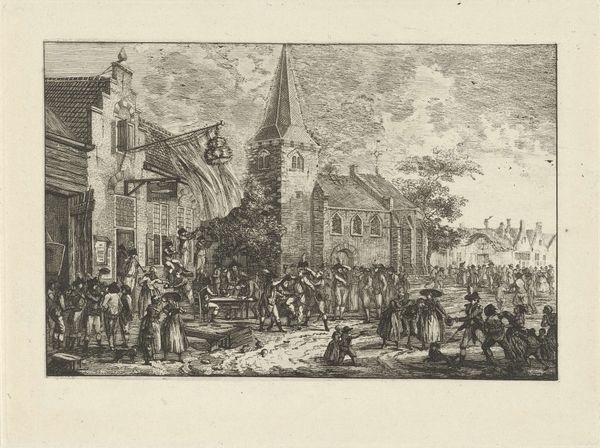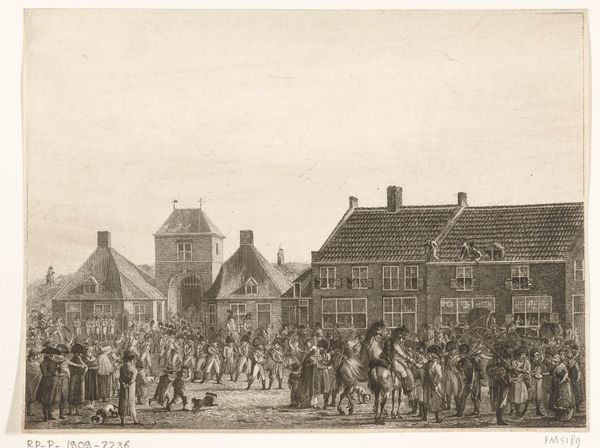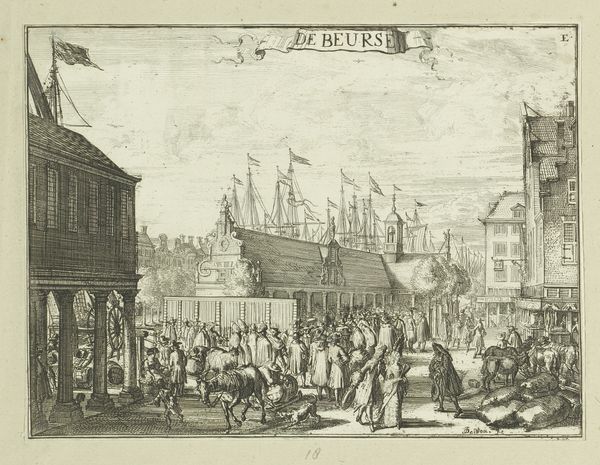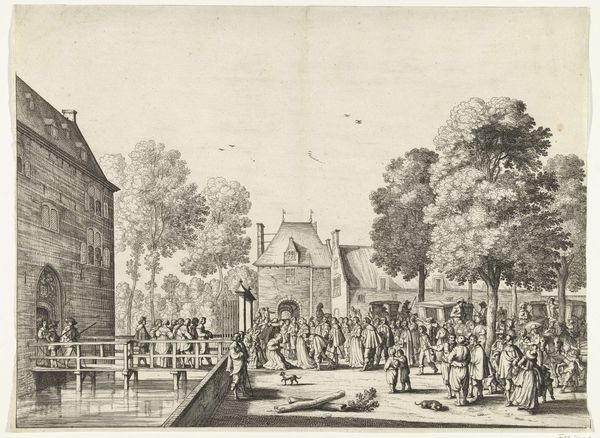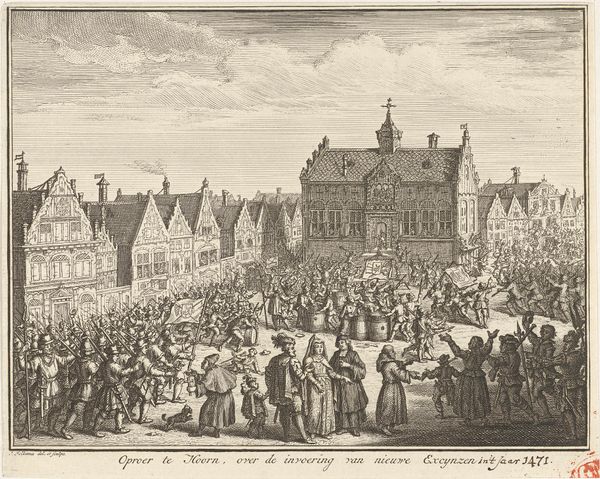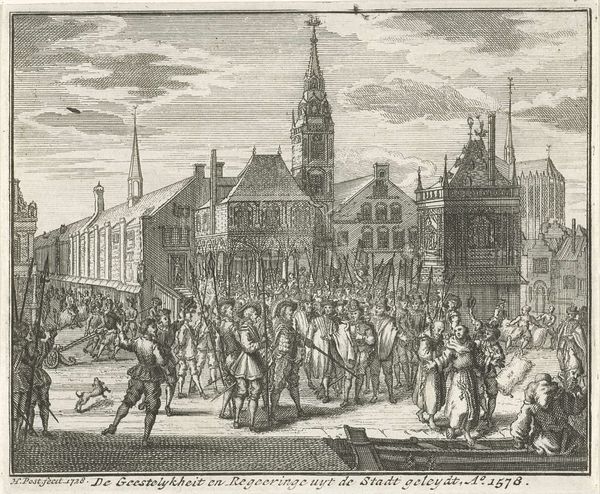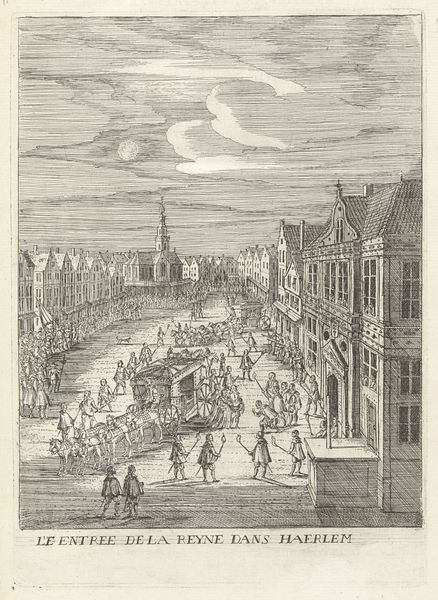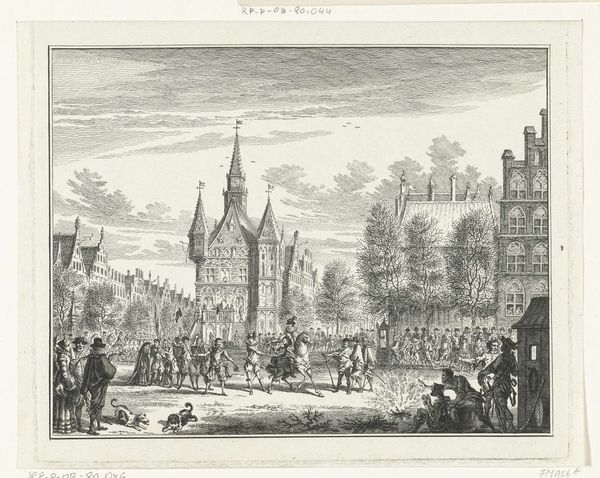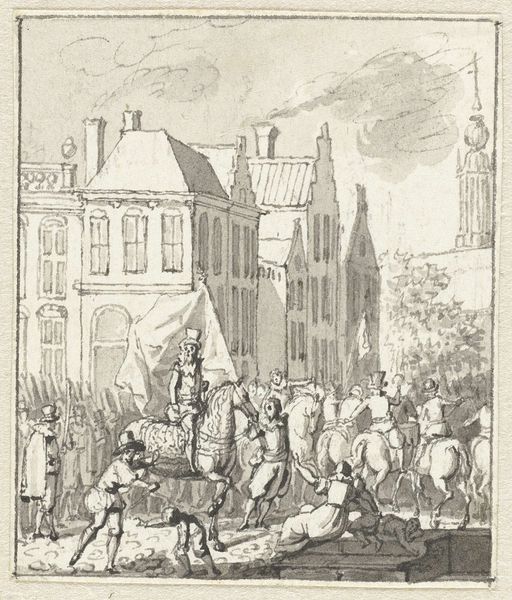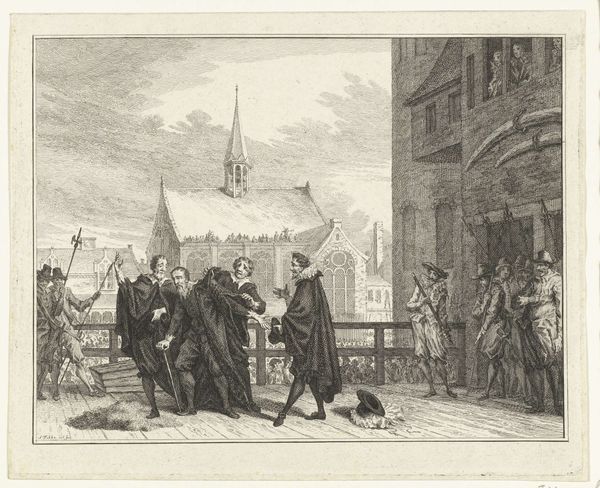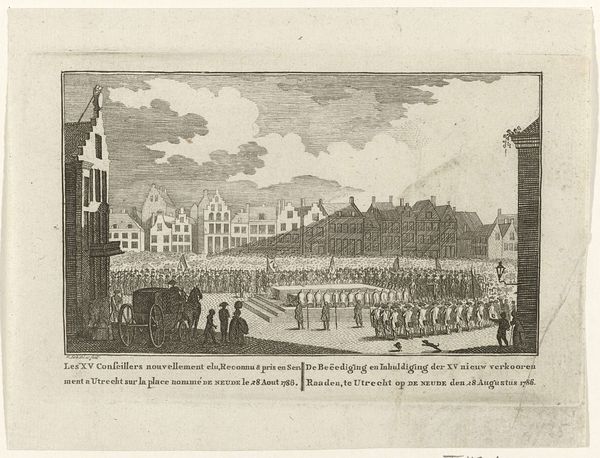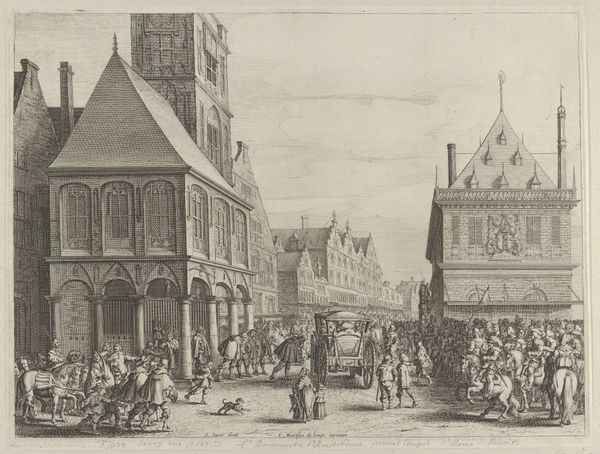
print, engraving
#
narrative-art
#
dutch-golden-age
# print
#
old engraving style
#
figuration
#
cityscape
#
history-painting
#
engraving
Dimensions: height 85 mm, width 106 mm
Copyright: Rijks Museum: Open Domain
Editor: So, here we have Simon Fokke's "Alteration of Amsterdam, 26 May 1578," an engraving from around 1782-1784, housed at the Rijksmuseum. It's quite detailed. I'm struck by how calm the scene seems, considering it depicts what I assume is a significant historical event. What do you see in this piece? Curator: Beyond the detailed rendering of the cityscape and figures, I see a visual argument about power and its transfer. It depicts a pivotal moment in Amsterdam's history, the shift from Catholic to Protestant rule, which carries with it narratives of religious conflict, political maneuvering, and societal restructuring. Who holds the power, who gets to tell the story, and whose voices are marginalized in this depiction of 'alteration'? Editor: That's interesting. I hadn’t considered it as a power play. So the figures here represent different factions? Curator: Indeed. Consider the positioning of the figures. How are the Catholics represented versus the incoming Protestants? Is there a clear hero or villain? These depictions are rarely neutral; they reflect the artist’s, and perhaps the commissioning body's, perspective on the event and its implications. Furthermore, Fokke created this print a full two centuries after the event; what was at stake politically and religiously at that moment, and how did the intervening years shape the way the Alteration was viewed and visually represented? Editor: That really changes how I look at it. It's not just a historical record, but a commentary through a specific lens, decades later! The details of dress and body language would take on a whole new level of importance then. Curator: Exactly. How do those details serve to either reinforce or challenge the prevailing narratives of the period when this print was created? And perhaps more importantly, how do these power dynamics, visible even in this seemingly "calm" scene, continue to resonate within contemporary society? Editor: I hadn't considered the role of art in reinforcing or questioning power dynamics. It makes the engraving much more relevant, somehow. Curator: Ultimately, examining "Alteratie van Amsterdam" compels us to critically examine not only history, but also the biases inherent in its representation, pushing us to acknowledge the narratives that may be hidden beneath the surface.
Comments
No comments
Be the first to comment and join the conversation on the ultimate creative platform.
